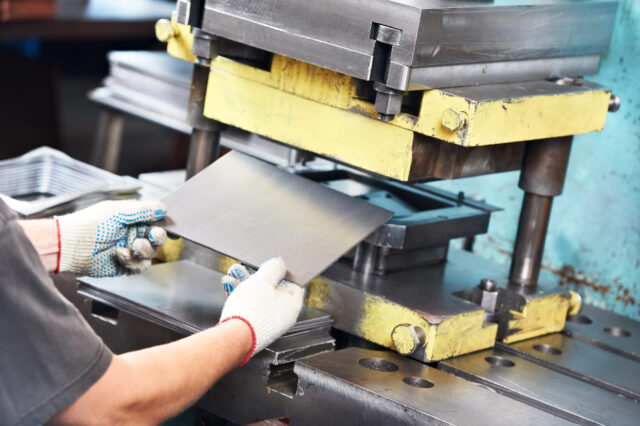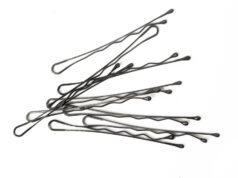Workshop presses are essential for various metalworking tasks in industrial and workshop settings. Designed to handle heavy-duty projects, these machines are used to replace bearings, straighten metal, and press ball joints, among other functions. A workshop press, with its ability to apply substantial force, simplifies many demanding tasks, ensuring precision and efficiency in metal manipulation.
Different models are available, ranging from 20-ton to 30-ton capacities, each suited to specific needs and applications. Whether for a garage or a larger engineering workshop, there’s a hydraulic press that fits the demands of the job. Customisation options are available for businesses that need specific configurations, enhancing versatility.
Users can enjoy features like adjustable rams and multiple height positions, which provide flexibility in operations. Safety is a key consideration when using these powerful tools, with many models incorporating mechanisms to ensure secure operation. For those looking to explore these powerful machines, investing in a quality hydraulic press can greatly enhance productivity and precision in the workshop.
Types and Uses of Workshop Presses
Workshop presses are versatile tools used in shaping and forming materials. These presses are popular in various industries due to their ability to handle tasks like bending, punching, and forming materials with precision and efficiency. Below are different types of workshop presses that cater to various needs.
Hydraulic Presses
Hydraulic presses are powered by hydraulic fluid that creates pressure. They are known for their ability to apply large amounts of force, allowing them to bend, stamp, and shape materials effectively. These presses work by using a hydraulic pump to force the fluid into a piston cylinder, applying pressure on the workpiece.
Their efficiency and precise control make them ideal for heavy-duty tasks and large-scale production. Hydraulic presses come in various sizes, offering flexibility for small to massive operations. They are frequently used in automotive, manufacturing, and metalworking industries. These presses are reliable and offer a high degree of repeatability. For more information on hydraulic presses, explore our professional options.
Manual Presses
Manual presses operate through hand power, relying on levers or screws to apply pressure. They are suitable for simpler tasks that require less force. These presses are favoured for their simplicity and low maintenance requirements. Manual presses like the H-frame press are often used for assembly, maintenance, or light production work.
They are ideal for workshops that value hands-on approaches, offering tactile control over the pressing operation. Though less powerful than motorised options, they are efficient for small tasks and provide satisfactory results in applications that do not require extreme precision.
Pneumatic Presses
Pneumatic presses use compressed air to generate force. These machines are appreciated for their ease of use and speed. They automate operations that would be challenging with manual presses, providing consistent pressure and control.
Their efficiency in repetitive tasks makes them prevalent in assembly lines and manufacturing of small parts. Pneumatic presses are quieter than hydraulic models and are efficient for lighter operations. They are compact, making them suitable for environments with limited space and proving advantageous for tasks that demand rapid cycling.
Electrical Presses
Electrical presses employ electric motors to generate force. They provide precise control and consistency, making them suitable for high-precision tasks. These presses are used in industries where accuracy is crucial.
They offer programmability, allowing operators to adjust speed, stroke, and force with ease. Electrical presses are appreciated for their low noise levels and energy efficiency. They are often used for pressing, bending, and forming in electronic and precision industries. Their versatility and control capabilities are advantageous in situations where repeatability and precision are crucial.
Maintenance and Safety
Maintaining a workshop press and ensuring safety involve regular checks, understanding safety features, and troubleshooting issues effectively. This prevents accidents, ensures long-lasting equipment, and keeps workers safe.
Regular Maintenance Checks
Regular maintenance of a workshop press is crucial to keep it functioning efficiently. This includes routine inspections to identify any wear and tear. Operators should follow a checklist that includes checking for leaks, unusual noises, and ensuring bolts are tight.
A maintenance log should be kept up-to-date. This helps track what has been serviced and when. It also ensures any necessary repairs are promptly completed. Preventative maintenance is essential to conformance with the Provision and Use of Work Equipment Regulations 1998.
Including a quality control step after maintenance helps verify that the press operates safely and efficiently. Keeping safety manuals accessible provides guidance for regular care procedures.
Safety Features and Precautions
Workshop presses should include built-in safety features to protect operators. These may include emergency stop buttons, safety guards, and two-hand operation systems. Such measures ensure hands are kept away from moving parts and reduce risk.
Proper training for workers is essential to safely operate the press. They must know how to use all safety features correctly. Everyone should wear appropriate protective gear like gloves and goggles. Clear signage around the machine reminds employees of safety precautions.
Regular audits help ensure safety practices are followed. A culture of safety awareness makes it less likely for workers to neglect these important strategies.
Troubleshooting Common Issues
Even with regular maintenance, presses can encounter issues. Common problems include hydraulic leaks, unusual vibrations, or electrical malfunctions. Diagnosing these early prevents further damage.
Operators should be versed in basic troubleshooting. Checking for obvious signs like damaged seals or frayed wires can often identify the problem. If further investigation is required, consulting the machine’s manual is a good first step.
It is important to contact a professional technician for complex issues beyond basic checks. Routine training on troubleshooting enhances operators’ understanding, enabling quick resolution of minor issues. Documenting problems and solutions provides valuable data for future quality control and maintenance improvements.








